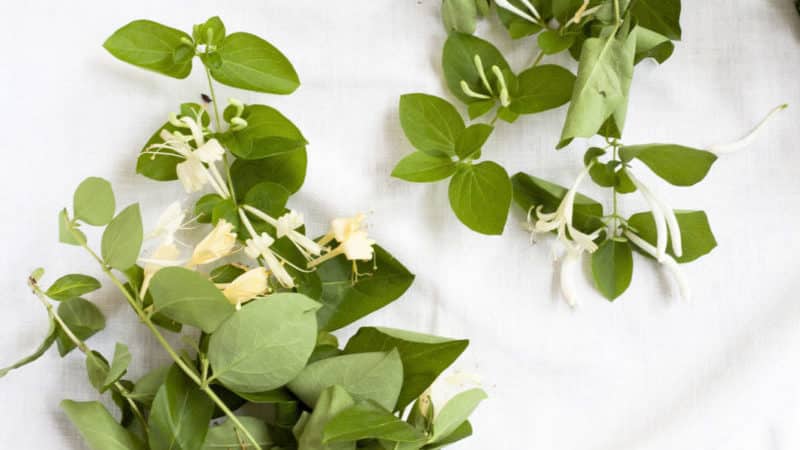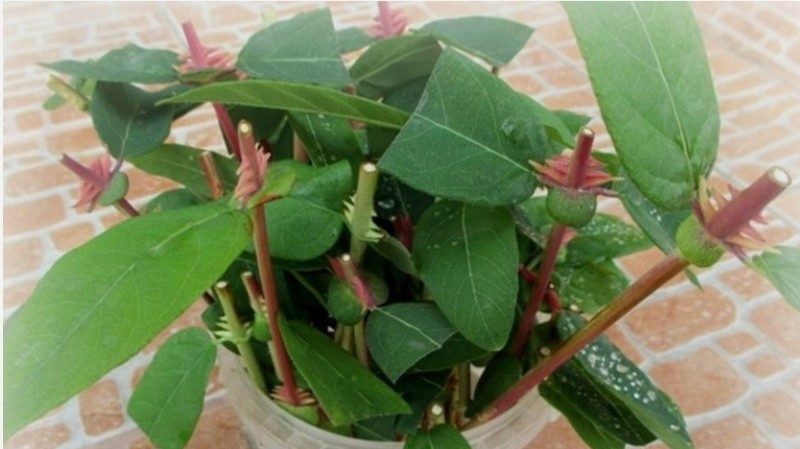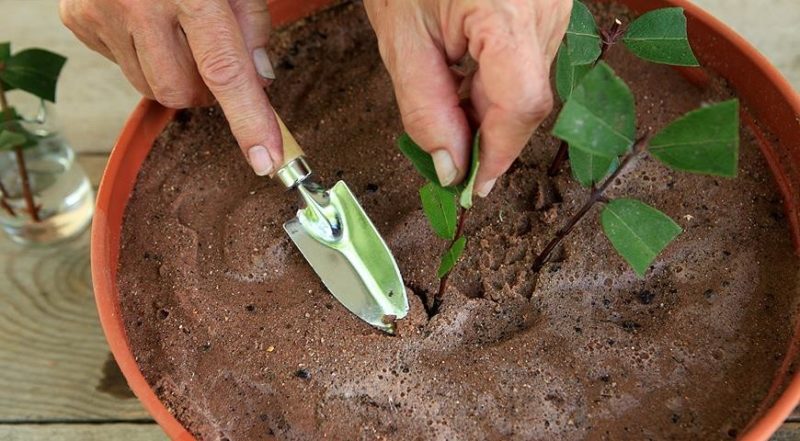How to propagate honeysuckle honeysuckle by cuttings in summer
Honeysuckle honeysuckle is a decorative fragrant vine that decorates garden plots with its abundant flowering. The inedible scarlet berries look picturesque against the backdrop of green foliage. To maintain health and beauty, gardeners annually prune the bush and at the same time carry out cuttings of honeysuckle honeysuckle in the summer. Read our article on how to prepare cuttings, root and plant them in a permanent place.
When is the best time to take honeysuckle honeysuckle cuttings?

Cuttings honeysuckle Honeysuckle - one of the most effective ways of its reproduction. From one healthy bush it is possible to collect about 200 cuttings.
In the spring, woody shoots are harvested. Pruning is done before the buds open. Green cuttings are harvested before flowering ends. Gardeners consider this period the most favorable - the cuttings have time to take root and sprout before planting.
If the gardener missed the opportunity to prepare planting material in the spring, the procedure can be postponed until the fall and the required number of woody stems can be cut.
In summer, cuttings are harvested after flowering - in the last days of July. To do this, shoots with 2 internodes are selected and the lower leaves are torn off.
How to propagate honeysuckle honeysuckle from cuttings

Before breeding Honeysuckle cuttings in the summer, it is recommended to familiarize yourself with a number of rules. Young annual shoots are suitable for cuttings.The procedure is carried out after flowering, otherwise the planting material will not take root and will die. Pruning is done in the early morning or on a cloudy day.
Reference. Reproduction of honeysuckle by cuttings allows you to preserve the characteristics of the mother bush.
Harvesting cuttings

To harvest lignified material, select annual shoots with a diameter of up to 1 cm and a length of 20 cm.. 4 buds are left on each of them.
Green shoots should be elastic and not break. To cut cuttings, select the central part of the shoot. On each cutting 7-12 cm long, 2-3 buds are left.
The lower cut is made at an angle of 45°; the top one is made straight, 1.5 cm above the buds. The leaves must be torn off.
Rooting

Cut lignified cuttings are placed in a container with water for 24 hours. For the best effect, it is recommended to add a biostimulant (Epin, Zircon, Kornevin). Next, the planting material is planted in a greenhouse, protected from direct sunlight. Keep a distance of 20 cm between cuttings.
The soil for planting is prepared from peat, turf and sand. Fertile soil should make up 1/5 of the total volume, peat and sand are mixed in a 1:1 ratio.
To maintain humidity in the greenhouse, planting material is covered with a plastic bottle or glass jar until the first leaves appear. The kidneys are irrigated with clean water 2-3 times a day. For the winter, the soil is covered with peat, and in mid-March - early April the cuttings are transferred to a permanent place.
Green cuttings are planted in the soil immediately after cutting. The substrate is prepared from 1 part peat and 3 parts river sand. The conditions for successful rooting are the same as for lignified material: high soil and air humidity, temperature +20...+25°C. Roots appear in 7-10 days.
Transplanting seedlings to a permanent place

Lignified cuttings are planted in a permanent place in late September - early October, and green cuttings are planted for the next season in the spring. Honeysuckle Honeysuckle It grows best in sunny areas and is not at all picky about soil composition. In the shade, the vine forms strong shoots, but blooms less profusely.
The shrub tolerates frosts down to -5°C and is resistant to fungal infections and insect pests.
Gardeners recommend planting the vine immediately in a permanent place. The bush looks more magnificent if 2-3 buds are left on the shoot. In the future, they produce young shoots, and with proper care they form a hedge. The trench planting method allows you to create vertical gardening.
For planting rooted cuttings, fertile sandy loam or loamy soil with a neutral pH = 6.5-7.2 units is suitable. As a last resort, planting is done on acidic peat or wet limestone soils.
Reference. The root system of honeysuckle is taprooted, dense, and highly branched. The roots go 45-50 cm deep and grow in diameter up to 1.5 m.
Choose a place for planting that is well lit from all sides; support pillars or walls of the house should be located nearby.
The selected area is pre-prepared: the soil is loosened, weeds and plant debris are removed, and fertilized with compost or humus (10 liters per 1 m²). Then they dig planting holes 60x60x50 cm, maintaining a distance of 1.5 m between the bushes. Expanded clay, broken brick or gravel are placed at the bottom.
A nutrient mixture is added to each cavity:
- 1 kg of compost;
- 50 g superphosphate;
- 50 g potassium salt.
A mound is made at the bottom of the planting hole, a seedling is placed on top, the roots are carefully straightened, watered with settled water, the hole is filled with soil to the brim and watered again.
It is recommended to deepen the root collar of decorative honeysuckle by 2-3 cm. The tree trunk circle is mulched with straw, peat, and hay to maintain optimal soil moisture.
Conclusion
Honeysuckle honeysuckle is especially popular among gardeners due to its picturesque flowering and ease of care. Shrub pruning is carried out in spring, summer or autumn and at the same time cuttings are prepared for further propagation.
Lignified planting material is first rooted in a greenhouse and planted in a permanent place in the fall. Green cuttings are moved into the soil after cutting, since they are quickly accepted, take root and have time to grow young shoots before the onset of cold weather.